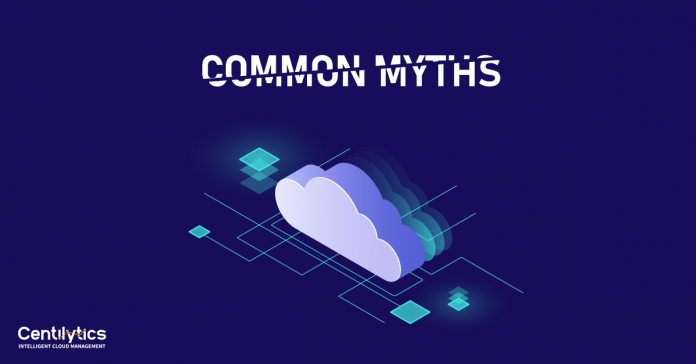As the pandemic went ahead and pended every aspect of the world as we knew it, organizations rapidly migrated their businesses to the cloud while are in the process of doing the same. However, despite this expedited migration, several myths about cloud services still persist. We have already described the benefits of cloud services to our users in great detail and how they can help you catapult your business to the front of the race.
Perhaps, now the is the time to debunk some myths around cloud services. Earlier, evolving technologies often created misconceptions among people, but emerging services put those misconceptions to rest. If you have already thought about migrating to the cloud and have done your homework, you must have come across these myths. In this article, we will debunk most of these common myths.
Cloud is Expensive
When it comes to cloud services, the biggest myth is the expenditure associated with it. Even though initial investment can be vary depending on the organization’s infrastructure and workloads, with proper management of resources, the capital expenditure is far lesser as compared to on-premise solutions. Under a usage-based model, cloud provides scalability along with improved performance and availability with the option of scalability. All of this at minimal upfront costs.
Cloud is Not Secure
Another common myth regarding cloud is about its security. Amid the increasing number of cyber-attacks and data breaches all around the world, safety concerns are at an all-time high. It is no surprise then that the cloud offers robust security strategies and recovery plans in case any attack happens. Cloud security will always remain a shared responsibility, but the same case applies to any other scenario. Today, cloud providers have multiple sets of policies and controls to provide a higher level of security to their users.
Cloud Means Giving Up Control and Data
People generally think that cloud solutions are very rigid and cannot be shaped according to their specifications. When it comes to migrating all your data from on-premise servers to the cloud, it is natural for organizations to think that they might lose control over their business workloads. However, in reality, cloud services work as a leasing authority where they provide the organizations pre-selected services and resources.
Cloud Leads to Job Loss
Due to its nature, cloud services can be easily automated, saving resources and time. However, this leads to the notion that the cloud is an IT job killer. The truth is far from it, when a company transitions from on-premise servers to the cloud they still need an IT expert to take care of the technical aspects. The previous jobs of managing the on-premise servers would change into new ones to maintain the cloud environment and ensure uptime.
There is Nothing to be Done Once One Migrates To Cloud
Cloud services can be adopted in multiple ways ranging from simple rehosting to a complete application. Somewhere along the road, the notion that “once I have moved to the cloud, my work is done” started. To leverage the cloud services in the best possible manner, it is essential to understand the cloud services model. Migrating your infrastructure from on-premise to the cloud is just the beginning.
Legacy Apps Will Have To Be Remade
Several organizations ranging from small to large have already introduced multiple legacy applications based on their traditional server. Apprehensions whether these applications will be able to migrate to the cloud emerge. The truth is that there are many ways to modernize the applications and integrate them with the cloud.
Moving to Cloud Leads to Vendor Lock-In
The dreaded vendor lock-in inspires terror in organizations when they even think about migrating to the cloud. However, this is not the case as cloud services are highly democratic in nature and one can easily switch providers as per their need. Many organizations are also going for hybrid cloud setups or even multi-cloud setups where they need not put all their eggs in one basket.
Conclusion
Now that these myths have been debunked, the next stage is to step into the world of the cloud. Integration with the cloud is the next step in business evolution. These common myths often keep people from migrating to the cloud. Migration to the cloud is not an easy feat, it requires a lot of planning. Even a speck of anxiety can make the organizations afraid and lose out on the various benefits of the cloud. We hope that now these myths have been busted, you can focus solely on planning your cloud migration.


